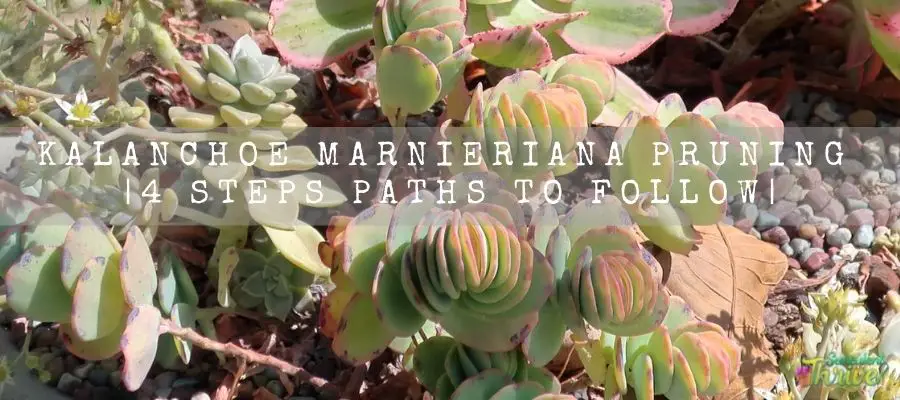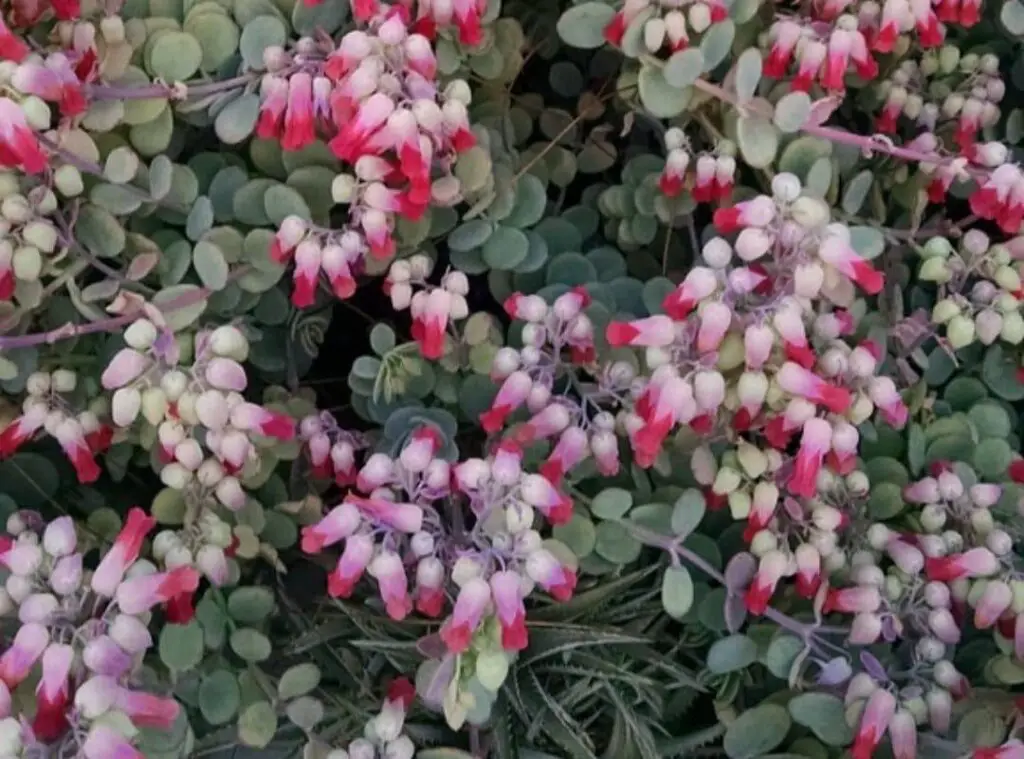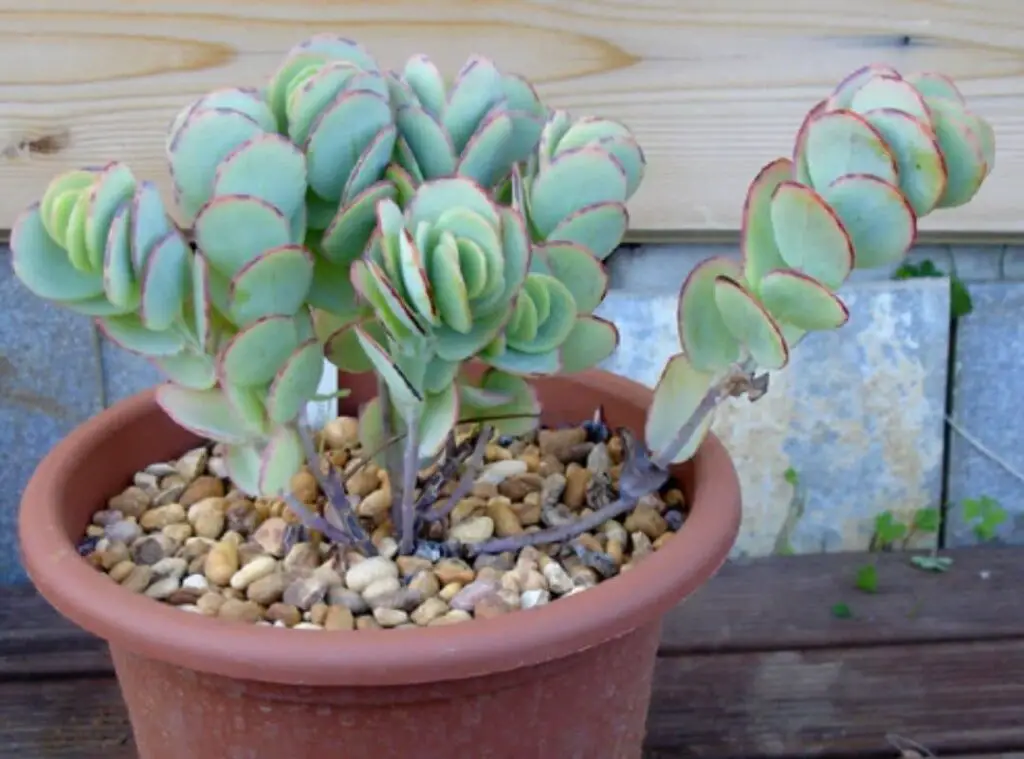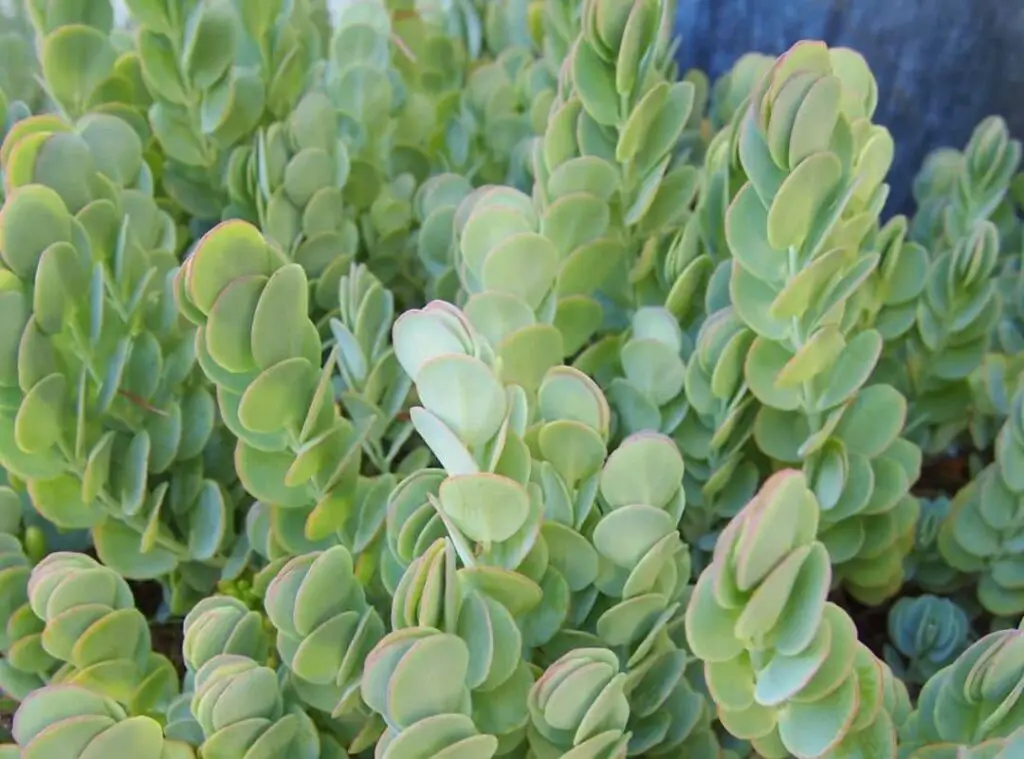Kalanchoe marnieriana pruning and shaping would be somewhat a difficult task for the beginners in gardening as you need to first educate yourself on pruning and how to conduct it. You cannot describe that as just cutting off the leaves and stems.
It is in fact more than that. You need to identify precisely as to which part you should cut and how much you need to trim etc. Additionally, you need to know what parts of the plants you need to skip.

Reasons to kalanchoe marnieriana Pruning
Kalanchoe marnieriana is a plant which is includes in the genus kalanchoe. Further it comprises of about 125 plant species.
They require only a little care from you and you could easily maintain them as well. You could either grow them indoors or outdoors depending on the weather conditions.
Having said that you need to care for the indoor grown Kalanchoe marnieriana little more than you outdoor plants.
It is not essential to prune these plants extensively just like the other succulents.
In other words, they do not depend a lot on pruning to stay healthy and to bloom vigorously.
When to prune kalanchoe marnieriana?
kalanchoe marnieriana pruning : During blooming
You could follow the below steps to when you are pruning the Kalanchoe marnieriana during their blooming.
Get rid of the spent blooms immediately. You could just pinch off the dead flowers at the very moment you spot them.
If you keep those dead flowers on the Kalanchoe marnieriana plants, it will make the plant look ugly. Not only that, but also it will terminate the plant in producing new flowers as well.
To do this, you could simply pinch off the dying flowers whilst using your fingers. Alternatively, you could cut them off too. When you cut them, make sure that you do that below the base only. Keep in mind to use only the standard pruning shears which are clean and sterilized.
Next you may, trim the stalks of the blooms. You need to do this after you take off the spent blooms. To do this also, make sure that you use regular pruning shears which are clean.
Moreover, you should clean and disinfect the pruning shears whilst using rubbing alcohol or even using bleach diluted in water. It will avoid any potential infection.
After that, you could remove the dead and leaves and shoots . Further you should trim off the yellow, brown, rotting leaves and even the stem at the bottom of the plant above where the branches produce on the stem.
In addition to that you need to take off the damaged leaves and stems whilst practicing the aforesaid methods.
Finally, you need to observe the plant well to identify whether you have taken off all the dying leaves. Unless, if your plant is suffering from a particular disease, chances are that it could end up spreading out throughout the plant.
When you remove those damaged parts of the plant, it will help to keep the plant’s wellbeing. Apart from that, it will make them look fascinating too.

kalanchoe marnieriana pruning : After blooming
You could follow the below steps to when you are pruning the Kalanchoe marnieriana after their blooming.
Snip whatever the tall growth you could spot after they completed the blooming. Chances are that these kalanchoe plants could bloom again every year. However, you need to make sure that you care for them more when you expect them to rebloom.
You may prune the kalanchoe plant once it has completed its blooming in a year. You simply have to take off the older flower stalks to make it prepared for the next blooming and to enhance it.
Chances are that your kalanchoe plant could get stretched and taller if it is running short of adequate sunlight.
If you come across such a situation where you spot your succulent taller and leggy after you prune them, you need to shift the plant to a location where it will get enough sunlight. It has to be ideally direct sunlight.
Apart from the above, you could consider them repotting in a bigger pot. That will help the plants to have a bushy growth of them. After that you could locate the plant in a sunny warmer spot. It could ideally be near to a bright and sunny window.
You could prune the kalanchoe after blooming as it will enhance a better growth and encourage better blooming next year. Observe the plant closer and see whether the plant is in good shape after pruning.
Next you could cut within half an inch (13mm) a leaf node so that you could shape the plant. when you select a leaf node to cut make sure that is pointed in the direction you wish to see the stem to grow. Trim the stem whilst keeping a 45 degree angle.
To do this, you could use sharp clean pruning shears just like in the aforesaid process. After that you could see how the new growth will branch in the direction where you wish to have.
Ensure that the lower side of your angles cut should be in the same height as in the leaf node which is on the other side of the stem.
You need to transplant them or root prune if required. These plants are a relatively slow growing set of plants and you may grow them in the same pot for a few years.
Having said that, if you are someone who was successful in making the kalanchoe plant to bloom repeatedly, you need to change their pot to a slightly bigger pot whilst repotting them.
Moreover, if you spot the roots above the soil surface and if they are coming out of the draining holes, that indicates that the plant has become root bound.
If you wish to have the kalanchoe plant without becoming larger and in the same size, you need to take it out from the pot and prune the roots.

How to prune kalanchoe marnieriana
In the general context, succulents do well, if you prune them at the start of their growth season. Having said that you have the liberty of pruning them anytime if required.
Having said that if you prune these plants at the end of their growing season, chances are that you will not be able to spot the new growth faster. They will tend to make new growth a little slower. Further they could speed up the growth rate once they reach their growth season.
Tools needed
The most significant substance you need for pruning is a kind of cutting equipment. You could use bonsai scissors for this purpose. Their sharpness and the light weight make them best for this purpose.
Moreover, you need to keep in mind to use clean and sterilized pruning equipment so that you could avoid spreading any diseases among the plants. Apart from the scissors, it would be worth having the following items as well.
- Long Handle tweezers – to remove the dead leaves even in the hardest areas where you have to remove the dead leaves.
- Towel – To wipe off the dirt
- Chopstick – to loosen the soil and to make holes to plant the new plants.
- My cactus catches all trays – to collect both leaves and cuttings for the propagation process. Other
- Succulent cuttings – if you have to fill some gaps.
Beheading
First, you need to decide as to which succulent you need to leave it intact and in which succulents you need to chop their heads and proceed with the same.
After that, you need to keep the cuttings to dry for about a day and then transplant them. Unless there is a high potential of occurring a root rot. Best is to get all cuttings and that will help you to plant them at once on the following day.
You could spot the base plants are forming new growth and you could leave them in the arrangement as you wish. On another note, you should collect the healthy leaves which dropped as you could use them for propagation.
After pruning
If you spot the plants look leggy after pruning them, you could snip the tops off from those plants.
Once you obtain the cuttings, you need to ascertain that you let those cuttings wither for a couple of days prior to plant them again. It will avoid the risk of occurring the root decaying.
Do not forget to gather the healthy leaves which fall on the ground so that you could use them for propagation.
Keep in mind always to take off any dying plants so that it will make more room for the new cuttings.
If you leave those dying plants and damaged plants in the arrangement it would lead to various issues to take place.
As such, the best would be to take them off. Unless chances are that there could be root decays. There could be furthermore diseases and they could even spread to the rest of the other plants as well. As such without any second thoughts, go ahead and take them off.
Replanting the cut kalanchoe marnieriana
Once you leave those cuttings to dry for a couple of days. You could consider re-planting them in the arrangement. Make sure that you fill up the gaps where you had taken off the dead plants.
You could plant those in the succulent arrangement as tight as possible. It would help the plants to have a slower growth and that will make the arrangement look tidy in its looks.

Related questions
Should I cut back my Kalanchoe?
It is recommended to cut back the kalanchoe as it could be beneficial for the plant in different aspects. These plants usually bloom during winter. There is a high potential for them to bloom in January.
However, you need to make sure that they produce buds during fall. That will make the pruning more significant in order to have vigorous blooming during the next season.
As aforesaid, once you prune the kalanchoe plant, it will be beneficial to enhance the blooms of the next season. In addition to that, pruning would help the plant to stay in good health too. Apart from that, it will make them look good too.
Ideally you need to be patient and wait until late spring, as the kalanchoe flowers would have fallen on the ground after wilting. This is the time you need to prune the kalanchoe plant.
What do you do with a leggy kalanchoe plant?
If you realize that your kalanchoe plant is going through etiolation condition, it is a sign that plants send out to inform you that it is lacking adequate sunlight level.
In other words, you have placed the kalanchoe plants in an inappropriate place as it cannot absorb the required sunlight condition.
Hence, when you select a place to locate these kalanchoe plants, you need to make sure that it could absorb indirect sunlight. Best is to place them near a window where it could get bright sunlight for about 5-6 hours.
However, if you wonder as to what to do with the etiolated kalanchoe plants, you could prune the etiolated stems and immediately shift the pots to a place where they can obtain enough sunlight.
Make sure that your kalanchoe plant reaches a dominant state. After the blooming season is over, they will go dormant, and they will not produce new growth and you could go ahead with pruning during this time.
You need to disinfect your pruning shears along with some rubbing alcohol. After that you could pinch off the fresh stems and the spent bloom as well. You could use your fingers to do this.
After that, prune the leggy stem. You could use the pruning shears to do this and make sure that you snip all the etiolated parts of the plant.
That will make the plant look great. Further you could change the pot. That will contribute to a proper function and a better growth of the plant. Make sure you use a right soil mix for them to thrive well. Finally, you could place them in a bright sunny place where they can get adequate sunlight.
How do you shape a kalanchoe?
If you consider all kalanchoe plants, it is essential to do a pruning at any time of their life span.
On the other hand, there could be some exceptional kalanchoe plants which do not depend on pruning at all or with a minor pruning. It is essential to have sharp shears or sharp scissors along with a pair of gloves to do this process.
Read Next: Kalanchoe Marnieriana Aerial Roots | 5 Super Useful Facts |
